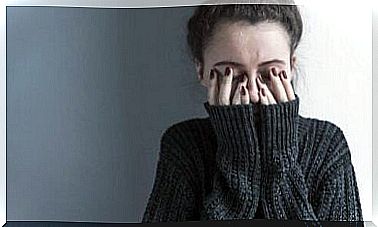The Many Types Of Stressors In The Workplace

It is an unfortunate fact that stressors in the workplace are quite frequent. In fact, they are far more common than you probably think. This is an important fact, as your performance and well-being can be significantly affected by them.
Although the causes are not always clear, these stressors can in most cases be easily defined and even resolved.
First, it is important to distinguish between specific and persistent work stress. In other words, it is one thing to suffer from extreme stress due to a particular project or a temporary excessive workload. However, it is another that anxiety accumulates and extends over time. In fact, this can be dangerous and even lead to serious illness.
In episodes of work stress, the worker may feel anxious about the idea that environmental requirements far exceed their capabilities and resources. In fact, something that theoretically should have been easy to solve is not always the case. Especially if the requirements for employer and employee do not match.
The causes of work stress can therefore be several and different. For example, excessive workload is an extremely common cause. Also insignificant (or non-existent) reward, the toxicity of bosses or colleagues, a feeling of stagnation, lack of motivation, professional development or personal control over tasks, etc.
Stressors in the workplace

The different types of work stressors tend to fall into three main groups:
- related to the organization itself
- related to the workplace
- generated in the individual
Let’s take a closer look at them.
Stressors in the workplace related to the organization
Such stressors occur in a “bad” organization. In other words, a company that insufficiently plans the work, or promotes an unproductive or demotivating work environment, etc. In these types of scenarios, the following problems may arise.
- Role conflict. The employee does not know exactly what is expected of them, receives conflicting demands and is not aware of what their responsibilities are.
- Overload. With this poor division of labor, the employee is forced to take on responsibilities that do not concern them or for which they are not prepared.
- Insufficient communication. There are communication problems between the parties, a conflict between departments and unclear or conflicting requirements, etc.
- Lack of development. The management of a company does not help in the development of the worker’s professional and pedagogical development. Consequently, the employee feels dissatisfied.
- Structure. Communication from the hierarchy does not reach all employees.
- Climate. Excessive control or tension in the work environment can even result in extreme situations such as bullying or burnout.
- Services. Inadequate services are offered to the employee. For example, no canteen, minimal parking, etc.
Stressors related to the workplace
The workplace itself can also be a work stressor for several reasons. Let us see under what conditions this undesirable situation may arise:
- Insecurity. Precarious work is a source of stress.
- Mental burden. Employment that requires long-term mental effort can be risky.
- Control. The employee does not control the tasks to be performed. Therefore, they can not organize their schedule, and it all depends on third parties.
- Complexity. The task to be performed is complicated or monotonous.
- Identity. The worker does not know the effect of his role in an organizational context. In fact, they consider that what they do has no real benefit.
- Relationship. Conditions in the work environment, both with colleagues and with other departments, are not satisfactory.
- Physical conditions. The workplace has insufficient lighting, is too noisy, or is too hot, etc.
- Materials. The employee does not have suitable material to perform the task.
- Risk. The employee may have to take physical risks. For example, those who are associated with long hours of monotonous work, poor posture, too many heavy lifts or having to deal with toxic materials, etc.
- Shift work. Excessive shift change has a negative psychological and physical impact on the employee.
- Allowance. Insufficient remuneration has a negative impact on the employee.
- Timer. Both the long working day and the lack of breaks and vacations are extremely harmful to the employee.
Person-related work stressors

Finally, it is the work stressors that are directly dependent on the individual himself. They usually appear due to the imbalance in requirements in relation to the employee’s own abilities and personality :
- Emotional control. The employee loses the ability to remain calm in certain situations and is unable to maintain balance.
- Empathy. They are not able to empathize with colleagues, bosses, subordinates, etc.
- Self-motivation. Lack of it appears in employees who are unable to understand the task they are doing.
- Lack of determination. This arises due to a lack of organization and systematization of the employees’ tasks.
- Stability. The emotional state of the employee affects their performance.
- Habits. Lack of healthy habits is harmful. For example, a good diet is necessary, in addition to proper behavior and adequate rest.
These are the most common stressors that experts have discovered. Do you recognize any of them in yourself?









